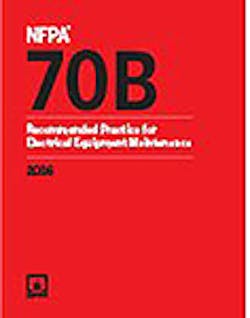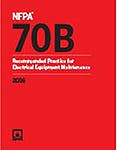Maintenance Procedures for Fuses — Part 1 of 2
Maintenance personnel should implement a maintenance procedure for interval inspections of fuse protected equipment. The maintenance procedure should stress the environmental or operating conditions of a particular installation. The environmental or operating conditions might dictate a specific frequency of maintenance that is different than suggested in NFPA 70B, Recommended Practice for Electrical Equipment Maintenance (Chapter 18 and Annex K and L). It should also be noted that maintenance, inspection, and test methods for fuses that can operate for long periods of time are essentially the same as for electrical equipment.
Part 1 of this two-part series focuses on fuses rated 600V or less. In Part 2, we'll focus on fuses rated greater than 1,000V.
Low-voltage fuses rated 600V or less are designated as either current limiting or non-current limiting based on their speed of response during short circuit conditions. Note, non-current limiting fuses can be replaced with current-limiting fuses, but current-limiting fuses should not be replaced with non-current limiting fuses unless a review of the specific application is undertaken. Current limiting fuses can also be used to reduce the energy produced by an arcing condition.
Let's explore what the current edition of NFPA 70B, Recommended Practice for Electrical Equipment Maintenance, has to say on this subject.
Fuses Rated 1,000V or Less
NFPA 70B - 18.1.1
Fuse Inspection Intervals
NFPA 70B - 18.1.2
Examination intervals of fuse terminals, fuseclips, and fuseholders should be performed in accordance with NFPA 70B - Annex L. Items should be checked for discoloration that is caused by excessive heat or from poor contact or corrosion. Early detection of overheating is possible through the use of infrared inspection as recommended in NFPA 70B - 11.17. If evidence of overheating exist, then infrared inspection should detect it for maintenance personnel.
Fuse Replacement
NFPA 70B - 18.1.4
There are many different types of fuses used in power distribution systems and utilization type equipment. Fuses differ by performance, characteristics, and physical size. Fuses, new or replacement type should be the proper type and rating.
Note: When replacing fuses, the fuseholders should never be altered or forced to accept fuses that are not designed for such replacement. Spare fuses with proper ratings should be kept in stock, especially those that are hard to locate which can cause replacement problems.
Fuse Listing and Labeling
NFPA 70B - 18.1.4.3.1
This section agrees with NEC 110.3(B) that it is important that the fuses bear the listing
mark of a nationally recognized testing laboratory (NRTL). Testing laboratories such as UL, ETL, FM, CSA, etc., test fuses for ac and dc performance characteristics, and such results are marked on the fuse label. Be sure to select the proper fuse for the specific application. Authors suggest referring to NEC 240.60 as well as other sections in the National Electrical Code (NEC) that are helpful before replacing.
Special Purpose Fuses
NFPA 70B - 18.1.4.4
NFPA 70B recognizes that special-purpose fuses in many cases can be used for supplementary protection of electrical power systems and for utilization equipment such as power rectifiers, variable speed drives, and solid-state controllers. NFPA 70B points out that high-speed or semiconductor-type fuses are mostly used in for these types of applications. Fuses of this type have unique performance characteristics and specific physical sizes that are excellent for these types of installations. Of course these fuses should be matched to the particular type of utilization equipment involved with such protection.
Fuse Types
NFPA 70B - 18.1.4.1
Fuse applications for fuses on electrical power systems for classes 0A through 600A are Class H, K, R, J, T, G, and CC. Class H, K, and R are typically the same physical size and are interchangeable in standard fuseholders. Special rejection-style fuseholders of Class R fuses are a special type. Class R fuses are manufactured in two types respectfully, Class RK1 and Class RK5. Class RK1 fuses are more current limiting than Class RK5 fuses and are recommended to upgrade older and existing electrical distribution systems and open the circuit faster. Class L fuses in the range of 601A through 6,000A is available for certain installations. Rejection fuses of the Class J, T, G, CC, and L are also available
Note: One type of fuse should never be replaced with a different type unless it has the exact same characteristics.
Selecting the Appropriate Fuse
NFPA 70B
Four ratings as well as characteristics should be considered when fuses are replaced and they are as follows:
• Interrupting rating,
• Voltage rating,
• Current rating, and
• Degree of time delay
Interrupting Rating
NFPA 70B - 18.1.4.2.1
Fuses should have an interrupting rating equal to or greater than the maximum fault current available at the fuse(s) point of application (authors suggest reviewing NEC 110.24). Fuses have interrupting ratings from 10,000A to 300,000A. For additional information pertaining to this subject, see NFPA 70B - 9.2.
Circuit Voltage
NFPA 70B - 18.1.4.2.2
This NFPA 70B section clarifies that the voltage rating of the fuse should be equal to or greater than the voltage of the electrical system.
Circuit Current
NFPA 70B - 18.1.4.2.3
Fuse sizes, in amps, should be adequate for the type of installation. The size of the service, feeder, branch-circuit conductors, and the loads supplied will be determined for proper size fuse selection.
Time Delay Fuses
NFPA 70B - 18.1.4.2.4
Fuses are available in time-delay and non-time-delay versions. Time-delay fuses are usually used for inductive circuits such as motor and transformer circuits having inrush currents on starting etc. Time-delay fuses are also used on power distribution circuits to open quickly and reduce the amount of time the current is allowed to supply an electrical arc. Where properly designed, this faster clearing time reduces the incident energy per NFPA 70E - 130.5(C)(1) and Annex D.2.
Conclusion
Based on the type and how they are used, fuses are typically installed in disconnect switches or other types of equipment.
Note: A dummy fuse, copper slug, or length of wire, etc. should never be used as a fuse substitute until replaced later.


